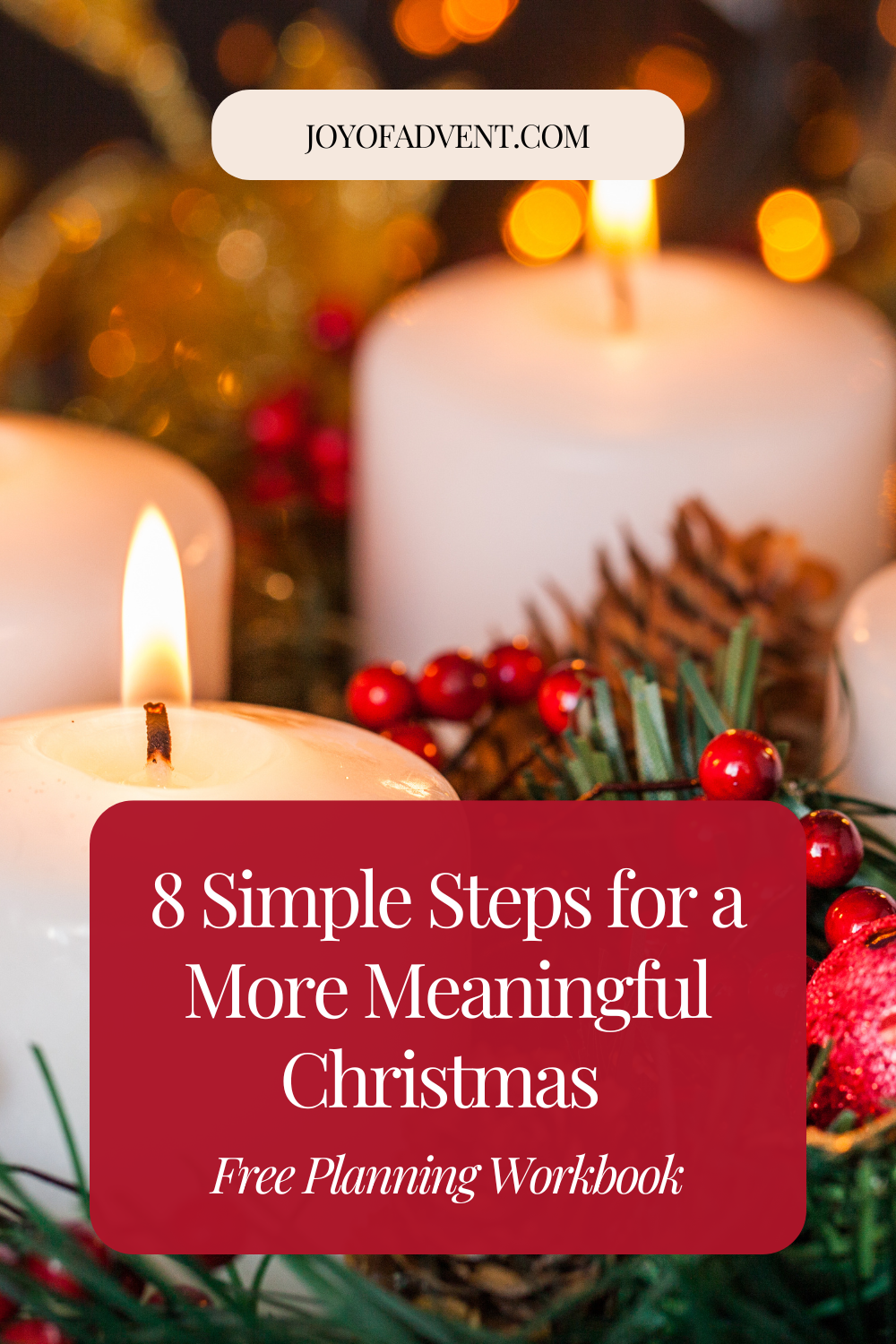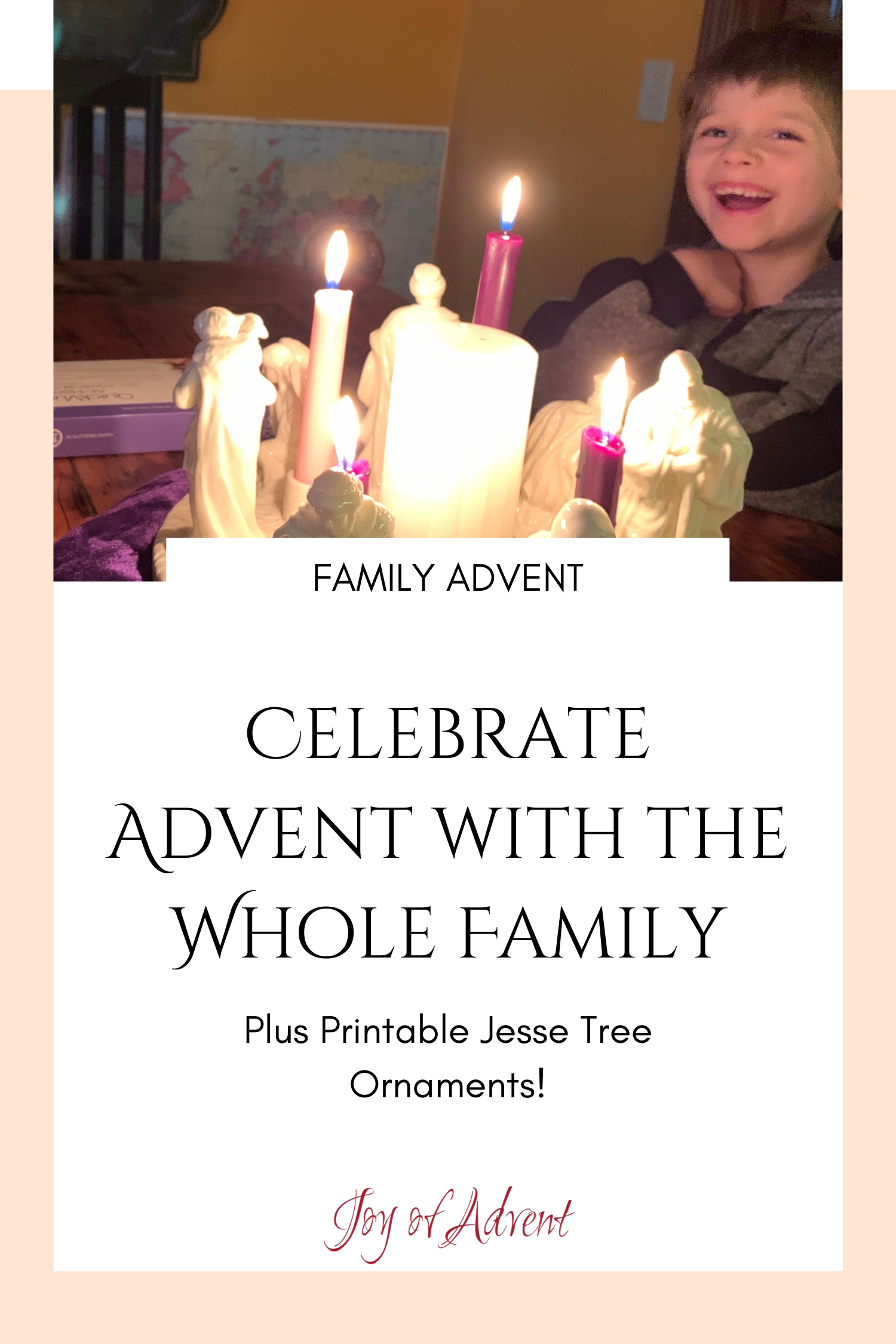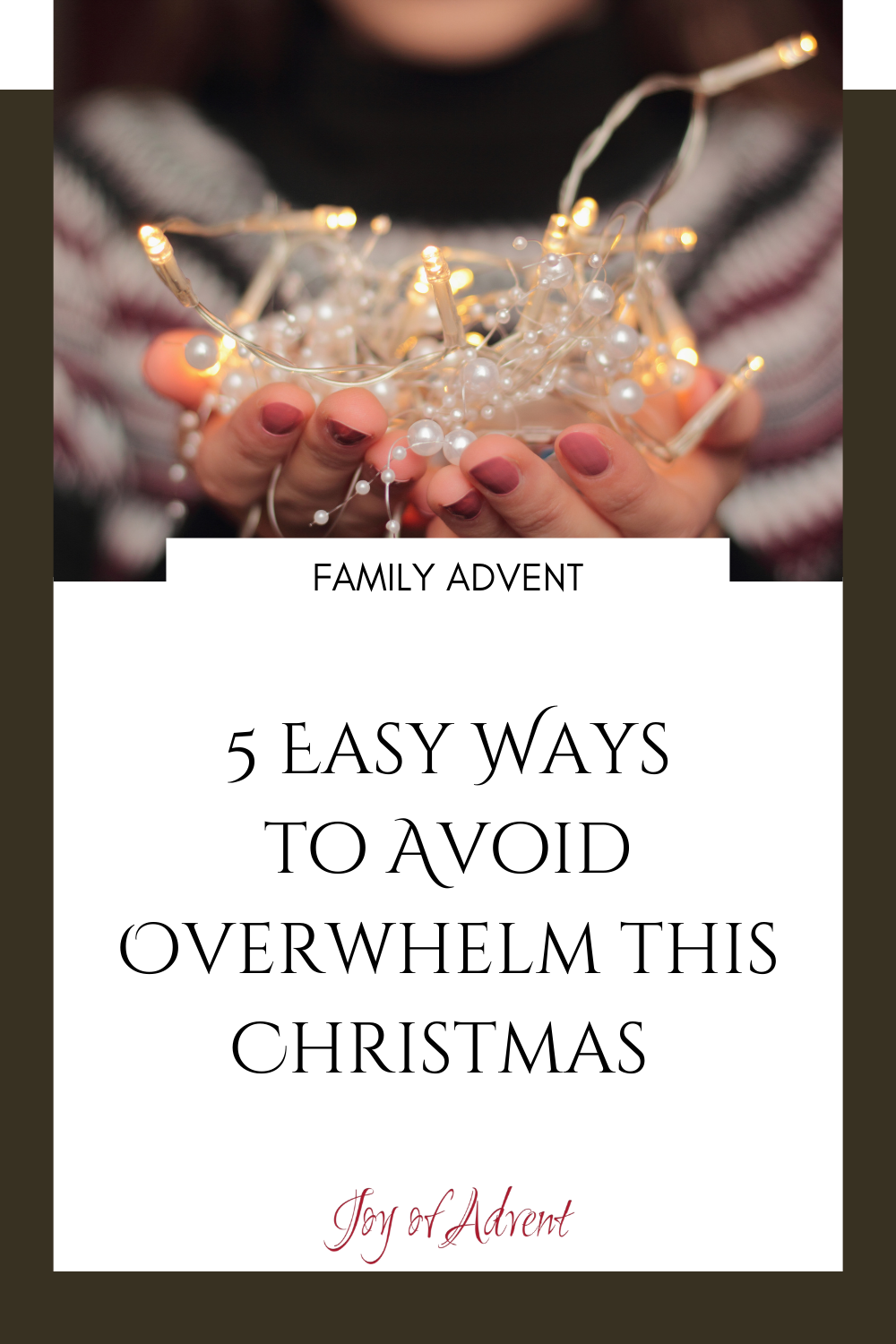8 Simple Steps for Your Most Meaningful Christmas
“Our holidays don’t need to be complicated, full of stress, or non-stop activity to be meaningful.”
It was December 3rd and I had yet to pull our wooden Advent calendar from the basement closet. We were already three days behind, if I started today.
For years I had Grand Intentions for Advent and Christmas: I will bake cookies every day! Do devotions with the family each night over a home-cooked meal! Put up Instagram-worthy decorations! Wrap all the gifts AND add ribbon!
For years I scrambled to fill the Advent calendar with candy, usually a few days late, amidst my scramble to keep the kids from wearing shorts during snow storms and dig out the snow pants.
By December 31st I was exhausted, only partially satisfied, and wondering where the past month had gone.
I bolstered myself with the hope, “Maybe next year…”
The more years I spend homeschooling, the more I realize the power of being intentional. There’s an old quote I see often: A goal without a plan is a dream. And while dreams are nice to have, I’d rather turn my intentions into reality.
I’m going to share with you the plan I use to simplify and “meaningfulify” (that’s a real word, as of right now) your holiday.
Our holidays don’t need to be complicated, full of stress, or non-stop activity to be meaningful. They simply need to be intentional.
The free PDF you’ll find at the end of this post will help you work through these steps. So let’s get planning!
Step 1: Set your intention.
What will be your focus this year? Peaceful relaxation? Worship? Creative expression? Food? Take a few moments to think about how you want your holiday to feel this year and write it down.
Define a Focus
How do you want your Advent celebration to feel this year?
Step 2: Identify a time for reflection.
Make a date with yourself! Will you take ten minutes at the start of your day? In the evening? Or perhaps you’ll sit down with an afternoon cup of tea for a moment of relaxation and reflection.
I’ve worked time in the morning (after a wake-me-up cup of coffee) into my daily routine, and many days I require the kids to give me ten minutes of silence after the youngest two go to bed. (Silence = not shouting “Mama!!!”, so not necessarily silence. I mean, let’s be realistic!) And a half hour during the weekend is reserved for planning my upcoming week.
Make a Date with Yourself
Keep reading—the second half of this step is below!
Step 3: Brainstorm all the things.
And pick a limited number (5) of things you can actually do.
In the printable I’ve included as many holiday “things” as I could think of, but don’t be limited by it. Have you always wanted to cut down your own Christmas tree? Do you want to make Christmas cookies for your neighbors? Choose the five things that are most important, and underline (if using the Planning for Advent Workbook) anything else that just looks fun.
Step 4: Think about the why.
It’s a well-known truth that our motivation is higher if we understand the reason why we’re doing something.
Do I want to watch a certain holiday movie with family because it was special to me as a child? Or perhaps I want to make crafts with my children because I want to give them sweet memories of glitter and glue and Christmas music with their family. Meaning matters!
Step 5: Sketch out your month.
You absolutely don’t need to do everything the first week of December, but most things can’t want to wait until December 24th either.
Plan on flexibility—prepare your cookie dough on a weekend early in the month and freeze it so making cookies can be done on a whim. Or nix your plan for paper Christmas cards and send an e-letter instead. Either way, put something on your calendar even if you’re not entirely sure when it will get done.
Think About Your Reason for Celebrating
Let every tradition sing with meaning by recognizing the meaning within it.
Step 6: Get organized.
Do you plan to bake cookies? Pick a recipe, list your ingredients for shopping, and look at your schedule to see when you have time for mixing and making. Or if you want to do a crafting day, list out your supplies and designate a basket on the counter to collect them until the big Craft Day arrives.
Step 7: Get it done!
But give yourself grace and flexibility. Life has a way of … happening. Just this week my well-laid homeschool plans for the younger kids were thwarted by an early morning call from Stephen on the way to school with the teens. “We hit a deer and are on the side of the road with a shattered windshield—can you come get us?”
“Remember that the Advent season isn’t about doing. It’s about being. ”
Step 8: Find a way to nurture your own heart.
I’m not talking self-care of spa days or tub soaks (though that sounds blissful!). We think of Lent as a time of fasting. Historically, Advent was also a season of fasting, yet in our culture of excess it has become a time of indulgence, feasting, buying.
With all the doing and going and spending, why not add something for your heart?
Find an Advent resource that will grow you. Something accessible, whether it’s a book of readings, a daily email subscription, or just your Bible and some time to read, reflect and pray.
Your Solution For an Easy Advent!
We have a resource that may be just what you need (see below).
Discover the Joy of Advent
Would you like one resource to simplify and enrich your family Advent celebration? Check out our book, The Joy of Advent: Family Meditations for Advent and the Twelve Days of Christmas!
Finally…
I still don’t do everything on my list.
I might hope to make a different favorite batch of cookies for each child, and end up being content with baking one variety we all enjoy, or I might give up on an Instagram-worthy tree and set the kids loose with lights and tinsel.
I might plan a holiday party and see it cancelled by a worldwide pandemic, or spend Christmas Eve not at a nativity service, but nursing a child through the stomach flu.
Even with the upsets, the Life that gets in the way of living (or adds to the living!), our Advent seasons have become more and more meaningful.
And the traditions we hold fast to are the ones our near-adult children say they wouldn’t miss for the world. When your usually-sullen teen says, “We better go cut down a tree this year—that’s my favorite part of the whole month,” you know you’ve done something worth remembering.
Download the free Preparing for Advent Workbook below as our gift to you!
Would you like the Preparing for Advent printable workbook?
It’s my gift to you. Thank you for growing in Grace with me!















